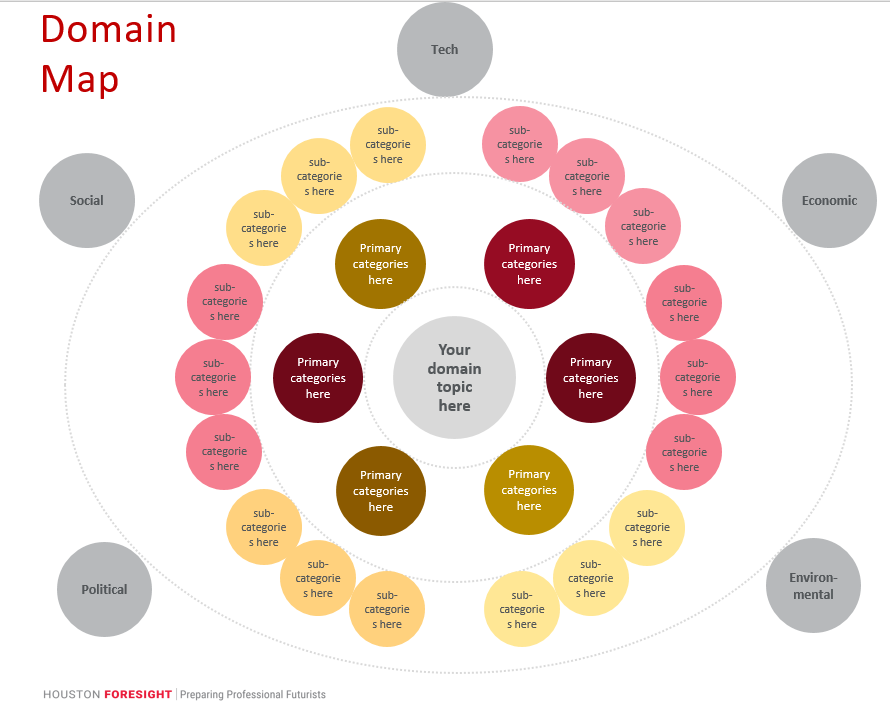 Last time, we talked about our typical three-month project. We have four weeks to do the bulk of the scanning. That’s a lot of work for a short amount of time, so we need to work smart and fast!
Last time, we talked about our typical three-month project. We have four weeks to do the bulk of the scanning. That’s a lot of work for a short amount of time, so we need to work smart and fast!
We essentially start scanning in “Framing” by crafting the domain map, which is a visual representation of the key categories and sub-categories for exploring the domain or topic. In essence, it is a visual outline to guide the exploration of the domain. The graphic shows a generic outline, which includes the domain and its categories and sub-categories – but we are not finished, lest we forget STEEP, the acronym many futurists use to capture the big picture context around the domain that may influence it. In essence, it is a map of the external context to the domain in question.
The newcomer will quickly ask – but how can we possible scan these broad STEEP categories in four weeks? Just Technology, for instance, would take months, right? Right! You essentially can’t. So what do we do? Cheat (ha!). We draw upon our prefabbed STEEP trend inventory. In our case, because I’ve been around for a while now, we have a large inventory of several hundreds of STEEP trends. At the beginning of the project, someone on the team will go through the inventory and pick out the STEEP trends that are relevant to the domain being explored. We will of course add a few new trends each time.
The bottom line is the STEEP trend inventory is the ticket. It’s not super hard to build one. You better get started … you’re gonna need it. – Andy Hines
Leave a Reply